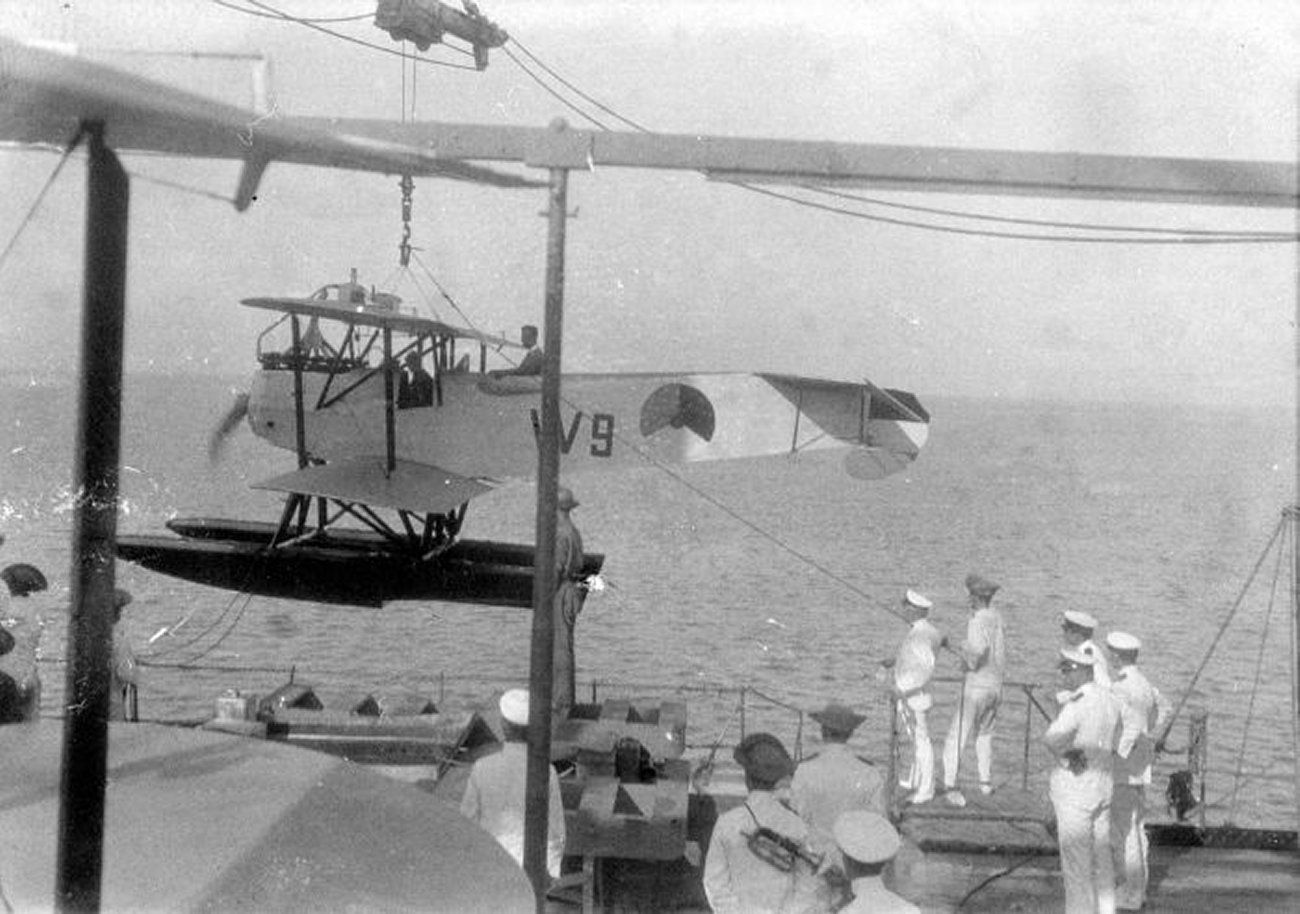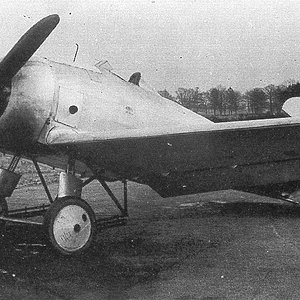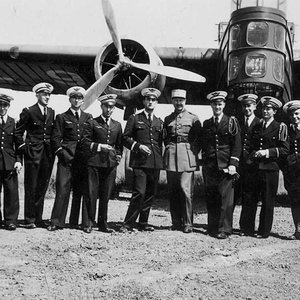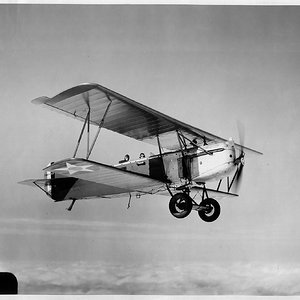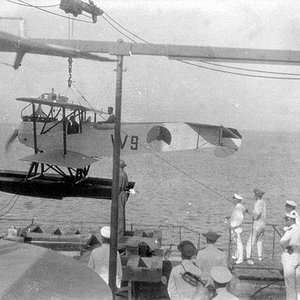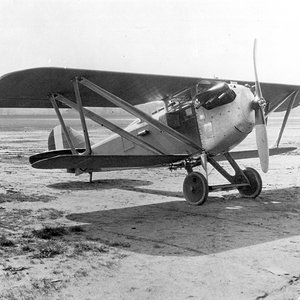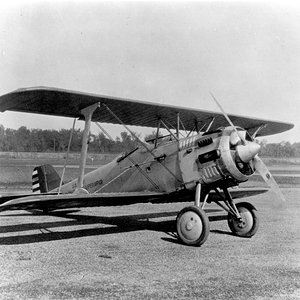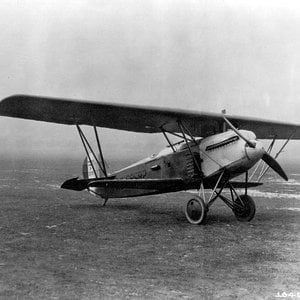Navigation
Install the app
How to install the app on iOS
Follow along with the video below to see how to install our site as a web app on your home screen.
Note: This feature may not be available in some browsers.
More options
You are using an out of date browser. It may not display this or other websites correctly.
You should upgrade or use an alternative browser.
You should upgrade or use an alternative browser.
A view from the Van Berkel W-A a copy of Hansa-Brandenburg W-12 , Java aboard the Dutch cruiser.
An entirely new type of seaplane was evolved by Heinkel during the last months of 1917: a two-seater low wing monoplane, the W.29. The first batch, Nos. 2201 2206, were ordered in December and reached the operational units in the following spring and summer; they had 195 h.p. Benz engines with frontal radiators. Six exhaust stubs discharged above and to port of the exposed cylinder heads. Ventilation louvers were provided in the metal side panels which enclosed the bulk of the engine.
The thick, broad-chord wings, of wood and fabric construction, had blunt tips and horn-balanced ailerons, and were rigged with several degrees of dihedral. The fuselage closely resembled that of the W.12, but the tail-plane was neater, with a rounded leading-edge: the elevators were horn-balanced and of unequal chord. Hinged to the vertical knife-edge of the fuselage was the rudder, with a large horn balance on its lower end and a straight trailing-edge its upper end extended above the top of the tail-plane.
Similar floats to those of the W.12 were fitted, and additional N-shaped bracing struts connected them to the under surface of the wings. The armament consisted of twin synchronized Spandau guns fixed on each side of the curved top decking in front of the pilot's cockpit,and a Parabellum gun on a ring mounting for the observer.
The new monoplane was an immediate success, and the further batches 2287-2300, 2501-2536 and 2564-2583 were ordered in April and May 1918. These aircraft had 150 h.p. Benz engines: the final batch of W.29s, Nos. 25842589, had Benz Illas of 185 h.p.
The Brandenburg monoplanes augmented the WI2 and W19s already operating from the seaplane bases at Zeebrugge, Ostend, Borkum and Nordeney. Their top speed of 110 m.p.h. and excellent maneuverability made them dangerous adversaries for the opposing Short sea planes and Curtiss and Felixstowe flying boats. They also preyed on naval vessels: on July 6th, 1918, the British sub marine C25 was surprised on the surface by a formation of Brandenburgs led by Christiansen. In a short time the submarine's motors had been put out of action, and many of the crew, including the CO., had become casualties. Eventually the C25 was towed into Harwich, leaking 'like a sieve'. The damage was all done by machine-gun fire, for the submarine was old, and the thin plating of its hull was not bullet proof.
An enlarged and more powerful version of the W.29). the W.33, was ordered in April 1918. It had the 260 h.p Mercedes engine, with six unusually long exhaust stubs which discharged above and to starboard of the nose. The tail-plane was squarer in shape. Nos. 2538-2563 are known to have been built, and there was certainly at least one later batch, for No. 2670 was surrendered to the British. This aircraft had a 240 h.p. Maybach engine.
The Hansa-Brandenburg monoplanes influenced German seaplane design quite considerably: several copies appeared in 1918, such as the Friedrichshafen FF 63. the Dornier Cs-I. the Junkers J.11, and the L.F.G. Roland ME 8. After the war a version of the W.29 was.used by Denmark, while a licence for the manufacture of the W.33 was obtained by Finland.
This W-29 model by Dick Doll is more an airplane portrait than a diorama. He writes to say that the exhaust pipes are noodles and the engine parts are wires. Proudly, quite a few other pages feature Dick Doll models
An entirely new type of seaplane was evolved by Heinkel during the last months of 1917: a two-seater low wing monoplane, the W.29. The first batch, Nos. 2201 2206, were ordered in December and reached the operational units in the following spring and summer; they had 195 h.p. Benz engines with frontal radiators. Six exhaust stubs discharged above and to port of the exposed cylinder heads. Ventilation louvers were provided in the metal side panels which enclosed the bulk of the engine.
The thick, broad-chord wings, of wood and fabric construction, had blunt tips and horn-balanced ailerons, and were rigged with several degrees of dihedral. The fuselage closely resembled that of the W.12, but the tail-plane was neater, with a rounded leading-edge: the elevators were horn-balanced and of unequal chord. Hinged to the vertical knife-edge of the fuselage was the rudder, with a large horn balance on its lower end and a straight trailing-edge its upper end extended above the top of the tail-plane.
Similar floats to those of the W.12 were fitted, and additional N-shaped bracing struts connected them to the under surface of the wings. The armament consisted of twin synchronized Spandau guns fixed on each side of the curved top decking in front of the pilot's cockpit,and a Parabellum gun on a ring mounting for the observer.
The new monoplane was an immediate success, and the further batches 2287-2300, 2501-2536 and 2564-2583 were ordered in April and May 1918. These aircraft had 150 h.p. Benz engines: the final batch of W.29s, Nos. 25842589, had Benz Illas of 185 h.p.
The Brandenburg monoplanes augmented the WI2 and W19s already operating from the seaplane bases at Zeebrugge, Ostend, Borkum and Nordeney. Their top speed of 110 m.p.h. and excellent maneuverability made them dangerous adversaries for the opposing Short sea planes and Curtiss and Felixstowe flying boats. They also preyed on naval vessels: on July 6th, 1918, the British sub marine C25 was surprised on the surface by a formation of Brandenburgs led by Christiansen. In a short time the submarine's motors had been put out of action, and many of the crew, including the CO., had become casualties. Eventually the C25 was towed into Harwich, leaking 'like a sieve'. The damage was all done by machine-gun fire, for the submarine was old, and the thin plating of its hull was not bullet proof.
An enlarged and more powerful version of the W.29). the W.33, was ordered in April 1918. It had the 260 h.p Mercedes engine, with six unusually long exhaust stubs which discharged above and to starboard of the nose. The tail-plane was squarer in shape. Nos. 2538-2563 are known to have been built, and there was certainly at least one later batch, for No. 2670 was surrendered to the British. This aircraft had a 240 h.p. Maybach engine.
The Hansa-Brandenburg monoplanes influenced German seaplane design quite considerably: several copies appeared in 1918, such as the Friedrichshafen FF 63. the Dornier Cs-I. the Junkers J.11, and the L.F.G. Roland ME 8. After the war a version of the W.29 was.used by Denmark, while a licence for the manufacture of the W.33 was obtained by Finland.
This W-29 model by Dick Doll is more an airplane portrait than a diorama. He writes to say that the exhaust pipes are noodles and the engine parts are wires. Proudly, quite a few other pages feature Dick Doll models

